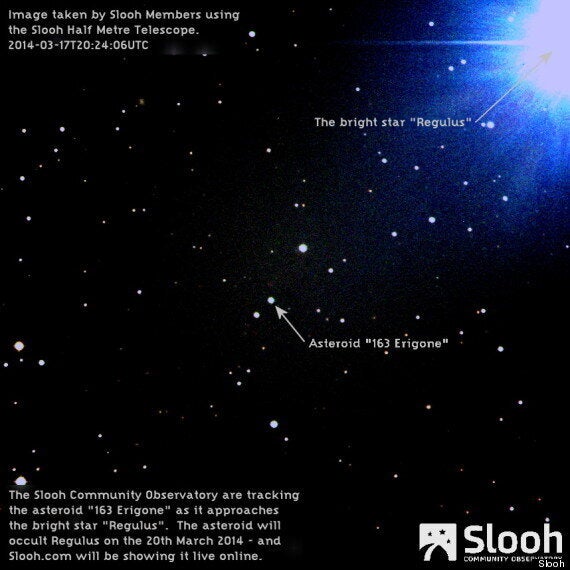A super-rare phenomenon will dramatically alter the night sky on Thursday, when an asteroid obscures one of the brightest stars from view.
Asteroid 163 Erigone is located in the main asteroid belt between Jupiter and Mars, and was discovered by French astronomer Henri Perrotin in 1876.
It's a large rock, about 43 miles in diameter, and as it turns out is the perfect size to totally eclipse a distant star.
The star in question is Regulus, one of the very brightest in the constellation Leo, located about 78 light years away. You can find Regulus by looking for the 'backwards question mark' star pattern which is nicknamed the Sickle of Leo.
Eclipses (or more properly 'occultations') of stars by asteroids are exceptionally rare, because the angle from star to asteroid to Earth has to be so precise for one to obscure the other.

But tomorrow morning for about 14 seconds and 2 minutes, Erigone and Regulus will do exactly that.
Alas, if you want to see the phenomenon you'd better get down to Heathrow sharpish. It will only be visible from North America, coming at 6am UK time.
But if you're in the right place at 2am EST you'll literally be able to stand in the asteroids 67-mile-wide shadow. The region of visibility stretches from Ontario to Manitoba, and includes New York City.
On the other hand, you can always watch the phenomenon online - it will be broadcast on YouTube by Slooh from the early hours of the morning.
Head over to Space.com for more detailed instructions on how to see the occurrence, if you happen to be reading this from the States.